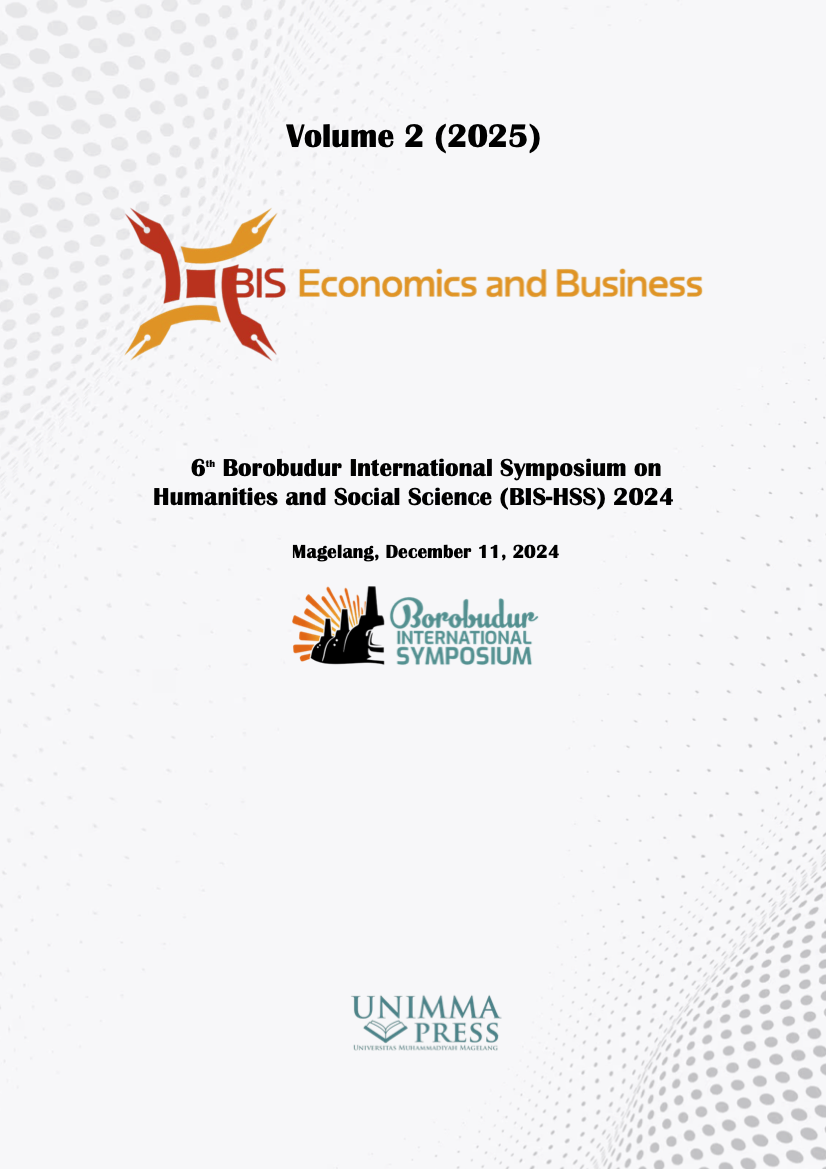The sustainability about the corporate sustainability itself (environment, social and governance): Methodological review in guidance of research onion
Keywords:
Sustainable, ESG, ValueAbstract
The decline in non-renewable resources has prompted growing attention to sustainability, leading to the rise of the Environmental, Social, and Governance (ESG) framework in corporate contexts. This study reviews the research article The End of ESG by Alex Edmans (2023), published in the Wiley Journal, using the Research Onion approach by Mark N.K. Saunders. The review covers three aspects: theoretical comparison between Edmans' work and other ESG-related studies, methodological analysis based on the Research Onion framework, and comparison of research findings using Publish or Perish and Scopus tools. The study finds that Edmans' approach is largely based on observation and experience, with limited theoretical grounding and no explicit mention of research methodology. Over the past five years, more than 200 ESG-related studies were identified. Edmans concludes that ESG is important but not exceptional. This review suggests that incorporating quantitative models could enhance Edmans’ arguments. The findings offer useful insights for investors evaluating ESG-focused firms and highlight ESG’s nuanced role in corporate value.
References
[1] Abdi, Y., Li, X., & Càmara-Turull, X. (2022). Exploring the impact of sustainability (ESG) disclosure on firm value and financial performance (FP) in airline industry: the moderating role of size and age. Environment, Development and Sustainability, 24(4), 5052–5079. https://doi.org/10.1007/s10668-021-01649-w
[2] Aouadi, A., & Marsat, S. (2018). Do ESG Controversies Matter for Firm Value? Evidence from International Data. Journal of Business Ethics, 151(4), 1027–1047. https://doi.org/10.1007/s10551-016-3213-8
[3] Chang, Y. J., & Lee, B. H. (2022). The Impact of ESG Activities on Firm Value: Multi-Level Analysis of Industrial Characteristics. Sustainability (Switzerland), 14(21). https://doi.org/10.3390/su142114444
[4] Dincă, M. S., Vezeteu, C. D., & Dincă, D. (2022). The relationship between ESG and firm value. Case study of the automotive industry. Frontiers in Environmental Science, 10, 1–10. https://doi.org/10.3389/fenvs.2022.1059906
[5] Edmans, A. (2023). The end of ESG. Financial Management, 52(1), 3–17. https://doi.org/10.1111/fima.12413
[6] Indri, S. A., Tjahjono, H. K., & Widowati, R. (2024). BUSINESS STRATEGY MAP AND KEY PERFORMANCE INDICATORS FOR SAFFRON PETSHOP BASED ON BALANCED SCORECARD. RGSA – Revista de Gestão Social e Ambiental, 18(9), 1–16.
[7] Rizqi, F.P.(2023). Sejarah dan Perjalanan Awal ESG dari Masa ke Masa.Mirekel. https://mirekel.id/sejarah-dan-perjalanan-awal-esg-dari-masa-ke-masa/
[8] W.Roberts, R. (1992). Determinants of Corporate Social Responsibility Discosure: An application of stake-holder theory.Accounting Organizations and Society. Elsevier, 17(6), 595–612.
[9] Zhou, G., Liu, L., & Luo, S. (2022). Sustainable development, ESG performance and
Downloads
Published
Conference Proceedings Volume
Section
License

This work is licensed under a Creative Commons Attribution-NonCommercial 4.0 International License.

